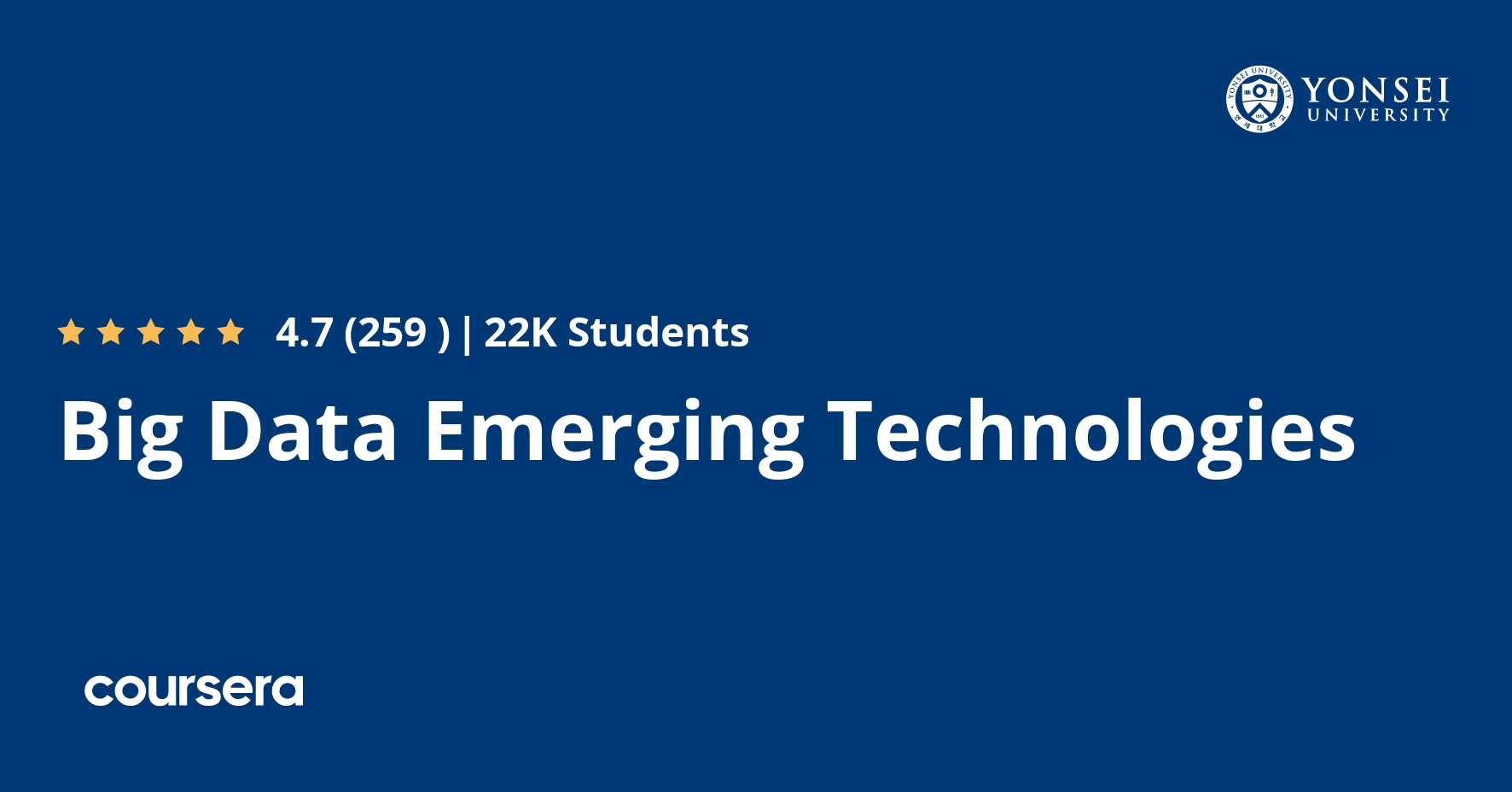Description
Every time you use Google to search something, every time you use Facebook, Twitter, Instagram or any other SNS (Social Network Service), and every time you buy from a recommended list of products on Amazon.com you are using a big data system. In addition, big data technology supports your smartphone, smartwatch, Alexa, Siri, and automobile (if it is a newer model) every day. The top companies in the world are currently using big data technology, and every company is in need of advanced big data technology support. Simply put, big data technology is not an option for your company, it is a necessity for survival and growth. So now is the right time to learn what big data is and how to use it in advantage of your company. This 6 module course first focuses on the world’s industry market share rankings of big data hardware, software, and professional services, and then covers the world’s top big data product line and service types of the major big data companies. Then the lectures focused on how big data analysis is possible based on the world’s most popular three big data technologies Hadoop, Spark, and Storm. The last part focuses on providing experience on one of the most famous and widely used big data statistical analysis systems in the world, the IBM SPSS Statistics. This course was designed to prepare you to be more successful in businesses strategic planning in the upcoming big data era. Welcome to the amazing Big Data world!
What you will learn
Big Data Rankings & Products
The first module “Big Data Rankings & Products” focuses on the relation and market shares of big data hardware, software, and professional services. This information provides an insight to how future industry, products, services, schools, and government organizations will be influenced by big data technology. To have a deeper view into the world’s top big data products line and service types, the lecture provides an overview on the major big data company, which include IBM, SAP, Oracle, HPE, Splunk, Dell, Teradata, Microsoft, Cisco, and AWS. In order to understand the power of big data technology, the difference of big data analysis compared to traditional data analysis is explained. This is followed by a lecture on the 4 V big challenges of big data technology, which deal with issues in the volume, variety, velocity, and veracity of the massive data. Based on this introduction information, big data technology used in adding global insights on investments, help locate new stores and factories, and run real-time recommendation systems by Wal-Mart, Amazon, and Citibank is introduced.
Big Data & Hadoop
The second module “Big Data & Hadoop” focuses on the characteristics and operations of Hadoop, which is the original big data system that was used by Google. The lectures explain the functionality of MapReduce, HDFS (Hadoop Distributed FileSystem), and the processing of data blocks. These functions are executed on a cluster of nodes that are assigned the role of NameNode or DataNodes, where the data processing is conducted by the JobTracker and TaskTrackers, which are explained in the lectures. In addition, the characteristics of metadata types and the differences in the data analysis processes of Hadoop and SQL (Structured Query Language) are explained. Then the Hadoop Release Series is introduced which include the descriptions of Hadoop YARN (Yet Another Resource Negotiator), HDFS Federation, and HDFS HA (High Availability) big data technology.
Spark
The third module “Spark” focuses on the operations and characteristics of Spark, which is currently the most popular big data technology in the world. The lecture first covers the differences in data analysis characteristics of Spark and Hadoop, then goes into the features of Spark big data processing based on the RDD (Resilient Distributed Datasets), Spark Core, Spark SQL, Spark Streaming, MLlib (Machine Learning Library), and GraphX core units. Details of the features of Spark DAG (Directed Acyclic Graph) stages and pipeline processes that are formed based on Spark transformations and actions are explained. Especially, the definition and advantages of lazy transformations and DAG operations are described along with the characteristics of Spark variables and serialization. In addition, the process of Spark cluster operations based on Mesos, Standalone, and YARN are introduced.
Spark ML & Streaming
The fourth module “Spark ML & Streaming” focuses on how Spark ML (Machine Learning) works and how Spark streaming operations are conducted. The Spark ML algorithms include featurization, pipelines, persistence, and utilities which operate on the RDDs (Resilient Distributed Datasets) to extract information form the massive datasets. The lectures explain the characteristics of the DataFrame-based API, which is the primary ML API in the spark.ml package. Spark ML basic statistics algorithms based on correlation and hypothesis testing (P-value) are first introduced followed by the Spark ML classification and regression algorithms based on linear models, naive Bayes, and decision tree techniques. Then the characteristics of Spark streaming, streaming input and output, as well as streaming receiver types (which include basic, custom, and advanced) are explained, followed by how the Spark Streaming process and DStream (Discretized Stream) enable big data streaming operations for real-time and near-real-time applications.





